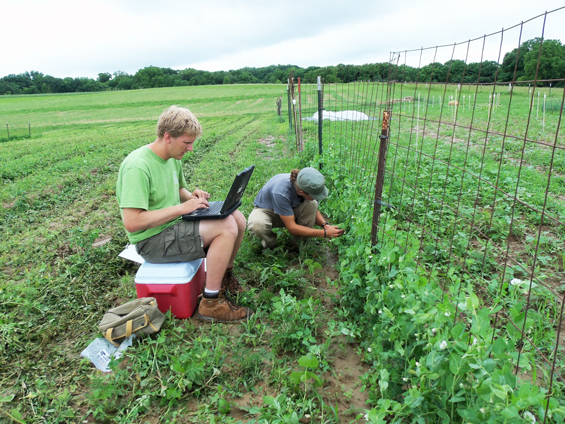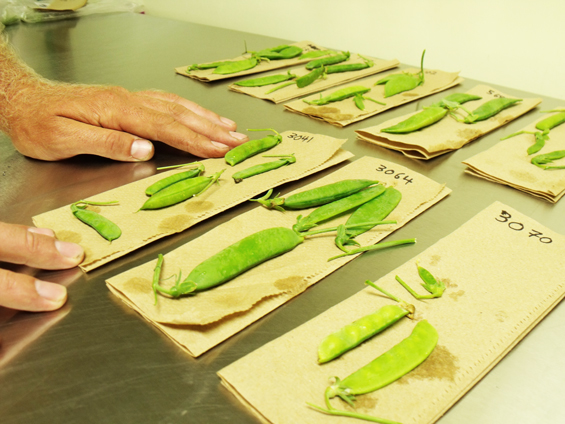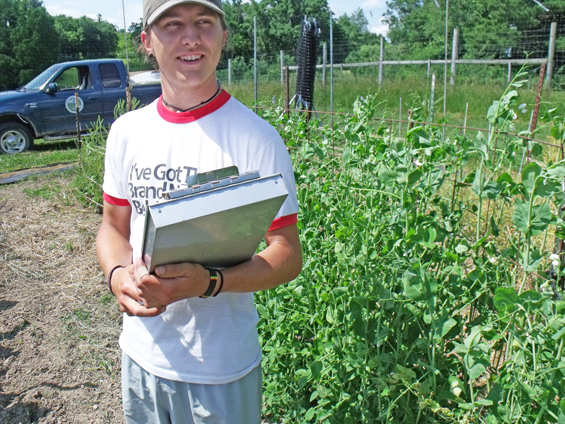Small talk, big numbers: A look at peas with the SSE Preservation staff
/If you’re trying to make small talk at Heritage Farm, don’t ask someone from the SSE preservation staff how the garden is looking. I found this out for myself a few weeks ago while fetching some coffee from the break room.
“How are those peas looking, Tor?” I asked innocently while filling my mug.
“Well, that really depends on what you’re looking for,” he replied, grabbing a pea magnet off the refrigerator. Two cups of coffee and a pea anatomy lesson later, I started to understand his frank response.
While we collect characterization data during most grow-outs, we use the term "evaluation" when varieties are being grown specifically with the intent of collecting characterization data. In 2011 we have several evaluations in progress, including okra, peas, eggplants and beans. In the case of peas, the preservation staff measures 17 traits of each of the 79 varieties grown for the collection here at Heritage Farm in 2011. Six of those traits require 10 individual samples. That’s 5,609 individual measurements done by hand—and that's just for the "fully expanded immature pods" life stage. The preservation staff takes measurements at five different life stages throughout the growing season and different traits are measured at each stage. Considering this myriad of variables, it’s no wonder Tor didn’t have a quick response when I asked him how his peas were looking. But I probably should have expected as much from a guy who gardens with a laptop!
But of course all these numbers have a much more significant purpose than derailing efforts at small talk. The preservation department webpage explains this importance:
“Each time seed is regenerated, the potential for genetic change exists. Plant evaluation is one way of knowing that seed harvested is true to the seed that was planted. Each variety we plant is evaluated at several stages throughout the growing season: at seedling emergence, plant maturity, reproductive maturity, and seed harvest. Quantitative and qualitative characteristics are recorded using a modified list of plant descriptors created by the USDA and Biodiversity International. Data is consolidated into brief descriptions for the Yearbook.”
Do you know more about your peas than the average Joe? If so, we need your help. Beginning in 2010, SSE members are invited to participate in our evaluation process by observing certain varieties in their own gardens. Learn more about our Member-Grower Evaluation Network (M-GEN).
















